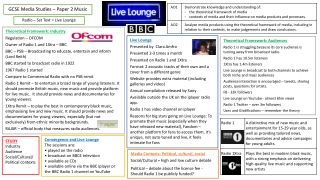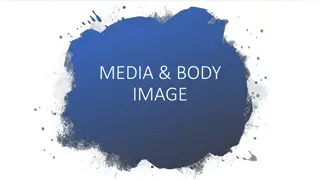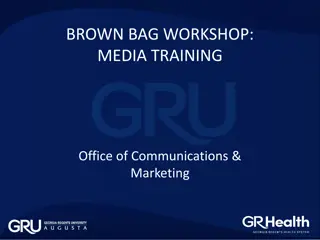Comprehensive Guide to Team-Based Learning Seminar
Explore the world of Team-Based Learning (TBL) through a seminar featuring learning outcomes, TBL concepts, program structure, design principles, and readiness assurance processes. Discover the benefits, challenges, and solutions of implementing TBL in educational settings.
Download Presentation

Please find below an Image/Link to download the presentation.
The content on the website is provided AS IS for your information and personal use only. It may not be sold, licensed, or shared on other websites without obtaining consent from the author.If you encounter any issues during the download, it is possible that the publisher has removed the file from their server.
You are allowed to download the files provided on this website for personal or commercial use, subject to the condition that they are used lawfully. All files are the property of their respective owners.
The content on the website is provided AS IS for your information and personal use only. It may not be sold, licensed, or shared on other websites without obtaining consent from the author.
E N D
Presentation Transcript
Learning & Teaching Seminar Team Based Learning Iyke Ikegwuonu, Areti Chavale, Aiden Gilani, Sarah Honeychurch
Learning Outcomes By the end of this session you will be able to: Describe what Team-Based Learning (TBL) is, Explain how and why Team-based Learning works, Discuss the benefits and challenges of team-based learning at programme level, Describe solutions for overcoming these challenges
Programme Why TBL? What is TBL? Team Formation Readiness Assurance Process Application Exercise Discussion and Q&A
What is TBL? A special form of active and collaborative learning Learner-centred flipped strategy, designed to engage students through a process of preparation, assessment and application of knowledge Shifts the focus of classroom time from conveying course concepts by the instructor to the application of course concepts by student learning teams
Four Key TBL Design Principles Teams must be properly formed and managed Diverse resources Permanent teams formed transparently Students must be motivated to come to class prepared Students must learn to use course concepts to solve problems Students must be truly accountable
Readiness Assurance Process (iRAT and tRAT) Individual Readiness Assurance Test (iRAT): students answer questions as individuals Answers are NOT revealed Team Readiness Assurance Test (tRAT): students answer same questions, but as a group Then answers are given
Readiness Assurance Process (iRAT and tRAT)
iRAT Question 1 In 2011, Chobani was the number one yogurt brand in the United States. However, by the end of 2012, the company was steadily losing its share of the US yogurt market. What one factor did NOT contribute to Chobani s momentary down fall? Rising competition in the US yogurt market A. Falling demand B. Product quality issues C. Chobani contained only strained Yogurt D. Excess capacity due to large plant E.
iRAT Question 2 What was the most important strategy used by Ulukaya to make Chobani a successful brand? A. Packaging B. Capacity expansion C. Market segmentation and customer education D. Innovation E. Internationalisation
iRAT Question 3 What does phigital approach to innovation imply? Consumers sharing experiences of use of Chobani yogurt over social media A. Integrating consumers' physical experiences with their digital or social B. media use Tracking fans pictures on pinterest and Instagram and different uses of C. yogurt Minute noting and observations of fans social media use of yogurt D. Describing customer experience over social media E.
iRAT Question 4 Looking at Chobani turnaround, what did Ulukaya do differently? A. Customer engagement B. Chobani advertised during the 2014 Super Bowl in the United States C. Marketing and promotion D. Value Innovation E. Chobani significantly expanded its portfolio
iRAT Question 5 What traits of a successful entrepreneur did Ulukaja implement? A. Ulukaya implemented innovation more quickly B. Ulukaya identified a gap in the market C. Ulukaya not only focused on consumers but also on the entire gamut of stakeholders D. A + C only E. All of the above
tRAT Question 1 In 2011, Chobani was the number one yogurt brand in the United States. However, by the end of 2012, the company was steadily losing its share of the US yogurt market. What one factor did NOT contribute to Chobani s momentary down fall? Rising competition in the US yogurt market A. Falling demand B. Product quality issues C. Chobani contained only strained Yogurt D. Excess capacity due to large plant E.
tRAT Question 2 What was the most important strategy used by Ulukaya to make Chobani a successful brand? A. Packaging B. Capacity expansion C. Market segmentation and customer education D. Innovation E. Internationalisation
tRAT Question 3 What does phigital approach to innovation imply? Consumers sharing experiences of use of Chobani yogurt over social media A. Integrating consumers' physical experiences with their digital or social B. media use Tracking fans pictures on pinterest and Instagram and different uses of C. yogurt Minute noting and observations of fans social media use of yogurt D. Describing customer experience over social media E.
tRAT Question 4 Looking at Chobani turnaround, what did Ulukaya do differently? A. Customer engagement B. Chobani advertised during the 2014 Super Bowl in the United States C. Marketing and promotion D. Value Innovation E. Chobani significantly expanded its portfolio
tRAT Question 5 What traits of a successful entrepreneur did Ulukaja implement? A. Ulukaya implemented innovation more quickly B. Ulukaya identified a gap in the market C. Ulukaya not only focused on consumers but also on the entire gamut of stakeholders D. A + C only E. All of the above
Application Exercise In this section students will work in teams to solve problems and provide collective answers from a specific set of answers. The Ansoff Matrix (AM) explains the four alternative options available to a firm for growth based on a combination of product or market expansion. As a group of marketing consultants: Arrange in order of priority A-D: how, in your view, Chobani should adopt the AM options? Agree in your group, which strategic option should come first. Explain why your preferred option is the best alternative. Use the flipchart provided to present your work. Declare your priority
Declare and Feedback Which option did you choose and why?
Discussion and Q&A How did you find the elements of TBL? How might you adopt it for use in your class? What tools might you need? What support might you need?























